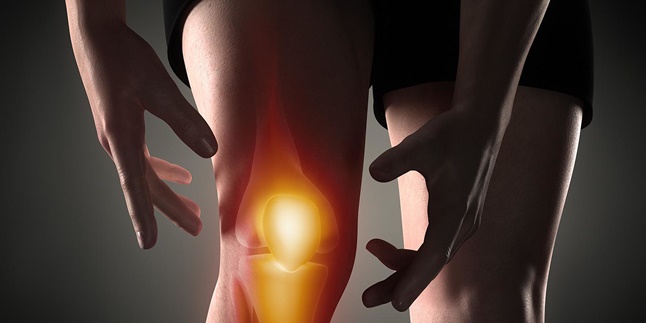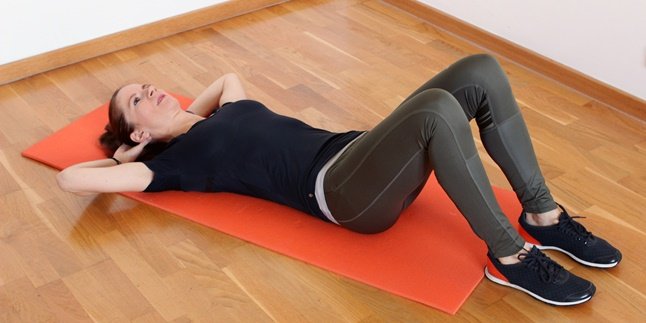Kapanlagi.com - Human beings are the most perfect creatures on earth who are given the advantage of reason by the creator. In addition to reason, the human body also has many unique features and holds many mysteries that are sometimes difficult for the human mind to accept. For example, the unique fact that our mouths can produce about 1 liter of saliva per day, or that there are as many as 37 trillion cells in our bodies.
Not only that, the human body is also equipped with joints for movement. Joints are the points of connection between bones where two or more bones meet and provide flexibility for our bodies to move. Inside the human body, there is a fluid called synovial fluid. This fluid functions to absorb shock and allows bones and joints to move smoothly. We are susceptible to joint disorders when one of these parts is disrupted.
If the vocal cords are the most important part of the body and are highly guarded by a singer, then joints also play an important role for an athlete, for example. Joints are very important to be maintained so that an athlete can move freely and perform optimally when competing. Knowing the importance of joint function, which generally consists of connective tissue and cartilage, it is not excessive to say that this part of the body must be maintained and cared for.
Now, to know how to maintain joint health, it is better for us to first understand the types of joints and their functions. The number of joints in humans is estimated to be around 250-350 joints. Each person has different joints, which means that one person and another person may have a different number of joints depending on several factors. Joints are divided into 6 types based on their function and direction of movement, namely:
1. Gliding Joints (Plane)

(credit: pixabay)
Called gliding joints because they allow sliding movements like an airplane due to bones that have flat or slightly undulating surfaces. An example of this joint is the intercarpal joint, which connects the bones in our wrist.
2. Hinge Joint
Called a hinge joint because this joint works like a door hinge that can only move in one direction, which is opening and closing. An example of this type of joint is found in the knee, which connects three bones: the thigh bone, the shin bone, and the knee bone.
3. Condyloid Joint

(credit: pixabay)
A condyloid joint has limited movement and cannot be used for rotational movement. The condyloid joint connects an oval-shaped bone with a similarly-shaped bone. An example of this joint is the joint that connects the bones of the palm with the finger bones.
4. Pivot Joint
Moving in a circular motion around a bone axis is the type of movement performed by this joint. The connected bones are bones that fit into the ring cavity of another bone. An example of this joint is the joint that connects the first and second neck bones, allowing the head to move forward and backward.
5. Ball and Socket Joint

(credit: pixabay)
Called a ball and socket joint because this type of joint has more freedom of movement like a ball compared to other types of joints. There are only two examples of this type of joint, as the human body only has two ball and socket joints. First, the joint in the hip that connects the pelvic bone and the thigh bone. And second, the joint in the shoulder that connects the shoulder blade and the upper arm.
6. Saddle Joint
The saddle joint has a shape similar to a saddle (the seat on a horse's back) and can only move forwards and backwards. An example of this type of joint is the joint connecting the wrist bone to the base of the thumb.
7. Tips for Maintaining Joint Health

(credit: pixabay)
It is very important to take care of your joint health, because according to data from the Center for Disease Control and Prevention (CDC), there are about 52.5 million adults affected by joint inflammation. Meanwhile, according to Nutrition and Health experts from Gajah Mada University, about 60% of Indonesian athletes are at risk of developing joint inflammation. When someone is injured or as they age, it can damage cartilage and make it difficult to repair, leading to thinning of the cartilage.
This can affect joint movement and flexibility. By adopting a healthy lifestyle and habits, it can help maintain joint health as well as other parts of the body. Some tips for maintaining joint health include staying active and exercising regularly, accompanied by proper warm-up and cool-down exercises, maintaining an ideal body weight, consuming foods that are good for the joints such as those containing antioxidants, calcium, and vitamin D (fruits, milk, and salmon), and many people also take joint supplements containing glucosamine and chondroitin to maintain joint health.
Those are the various types of joints in humans. Therefore, cherish your joints so that you can walk, run, exercise, and jump freely. Hopefully, this information is useful.
(kpl/dtm)
Disclaimer: This translation from Bahasa Indonesia to English has been generated by Artificial Intelligence.
















